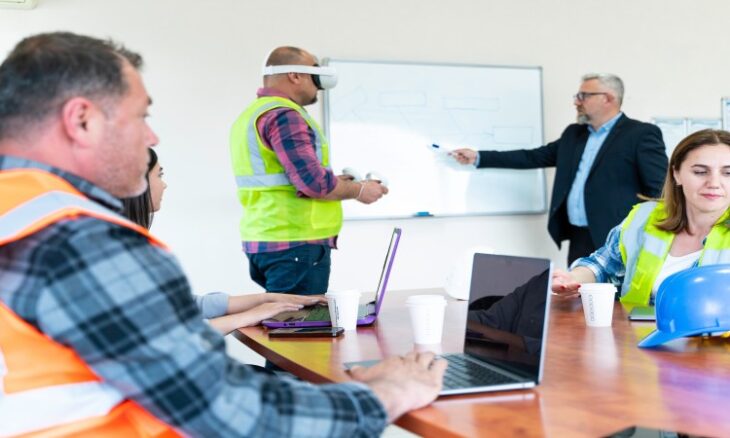XR technology strengthens workplace safety culture
Extended reality (XR), a term covering augmented reality, virtual reality and mixed reality, is reshaping the way many industries approach training, team collaboration, and workplace risk awareness. Companies are increasingly turning to these tools to identify factors that encourage safe practices and to uncover opportunities for improving everyday work.
Wearable XR technology, such as Smart Helmets, which feature microphones and cameras, allows digital data to be layered onto or integrated with the real world. It also enables users to step into a fully immersive 360-degree digital setting. BHP is examining this capability as a way to improve both its safety culture and operational practices through the use of Smart Helmets, VR systems and mixed reality.
As part of BHP’s global Field Leadership Programme, leaders regularly spend time in operational areas engaging with frontline staff to build a culture of care and gain a deeper understanding of work conditions. While this is an important initiative, logistical hurdles such as travel, time management and physical restrictions often limit the frequency and consistency of these visits. To overcome this, the organisation’s Workplace Technology and Mobility and Development teams tested XR-based equipment to support remote field leadership.
One particular case involved the use of XR during forklift inspections, a routine maintenance process that takes place across 19 different sites. In this scenario, an operator wore a Smart Helmet with hands-free voice control, streaming a live feed to team members in Adelaide and Brisbane. By observing directly from the operator’s viewpoint, coaches and teams were able to spot risks, suggest stronger safety controls, and refine procedures for safer work. This process not only enhanced learning from those closest to the risks but also maintained meaningful connections between teams across significant distances.
Smart Helmets have now been made available across BHP as technology-supported tools for remote coaching and leadership. The approach ensures that operational outcomes remain safe while sustaining the sense of connection encouraged by ‘felt leadership’.
At Olympic Dam, XR technology has also been tested to advance safety training. The objective was to reinforce hazard awareness by helping workers better grasp the idea of hazards as sources of potentially harmful energy present in day-to-day operations. Such damaging energies arise during interactions between people, machinery and the work environment, ranging from gravitational and vehicular forces to thermal, electrical and chemical risks.
To address this, BHP’s Asset Training team introduced two VR-based modules using headsets. The first simulated hazardous energy scenarios within the smelter, while the second was designed for the 420 Plat workshop, situated deep underground at 420 metres. These immersive experiences allowed workers to practise decision-making and technical skills in a risk-free, controlled digital space. Importantly, mistakes could be made without physical consequence, supporting a “fail-safe” approach.
The results of these trials indicated a measurable improvement in training quality, reflected in higher average scores from participants. This feedback confirmed the potential of XR tools to complement traditional training and to provide practical hazard awareness in ways that conventional classroom learning cannot.
The early application of XR across BHP is opening the door for wider integration. The technology is being considered as part of efforts to embed safety into the structure of everyday tasks under the BHP Operating System, to enhance the impact of global field leadership, and to lift safety capability across the entire organisation. By bridging gaps between teams, providing immersive practice, and sharpening risk awareness, XR is establishing itself as a powerful contributor to safer workplaces.










